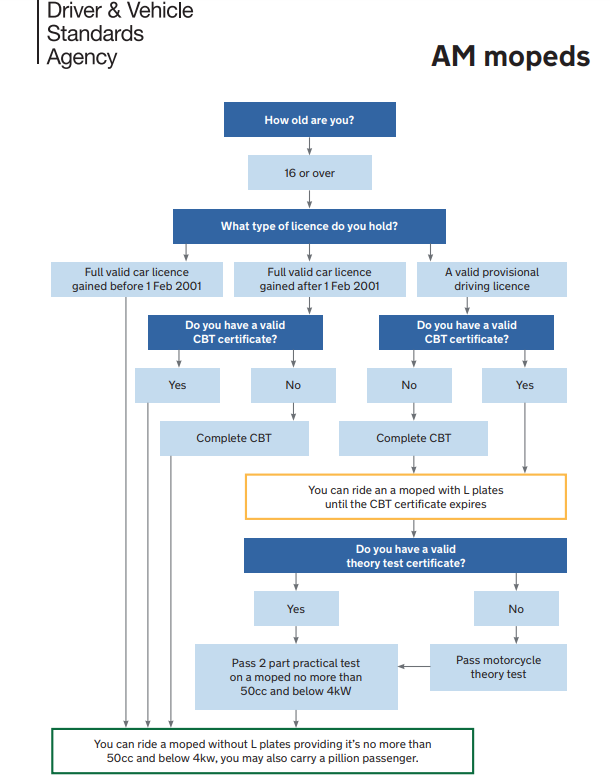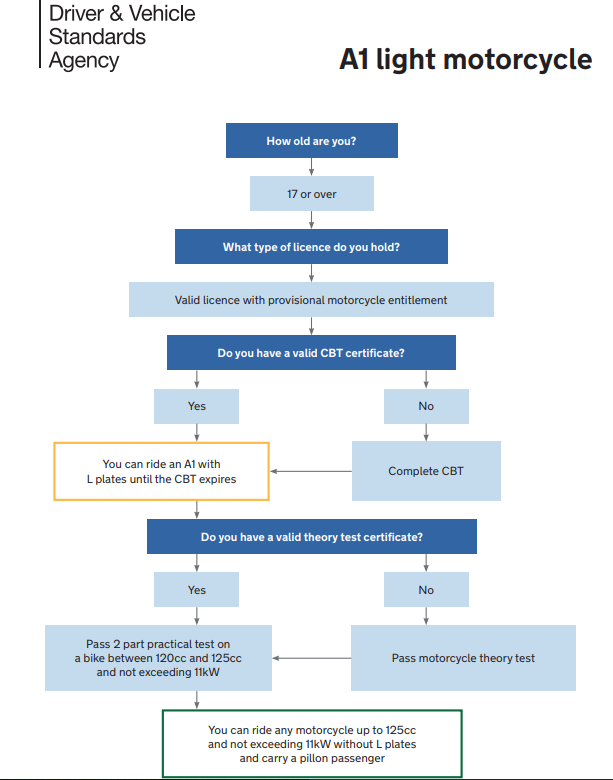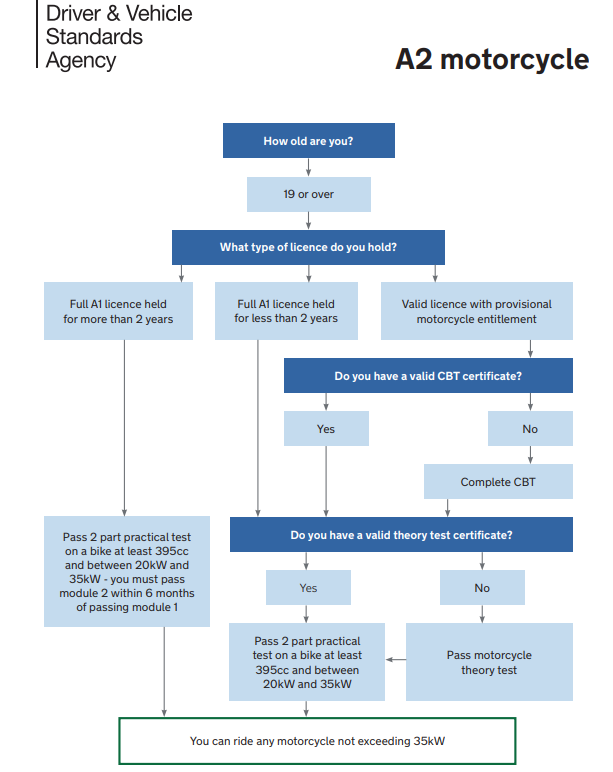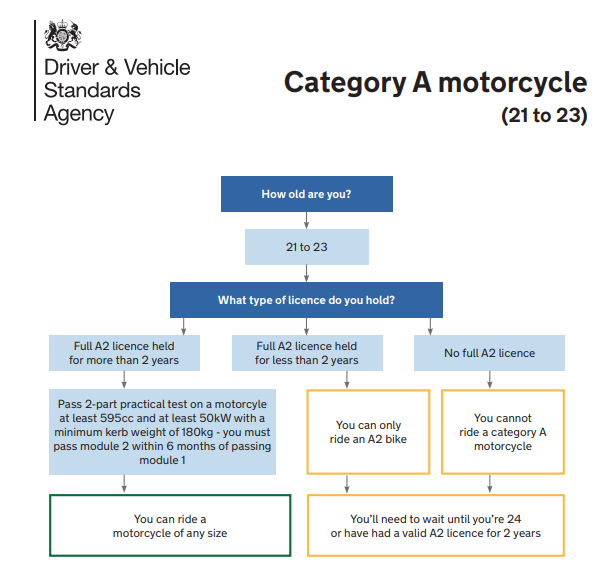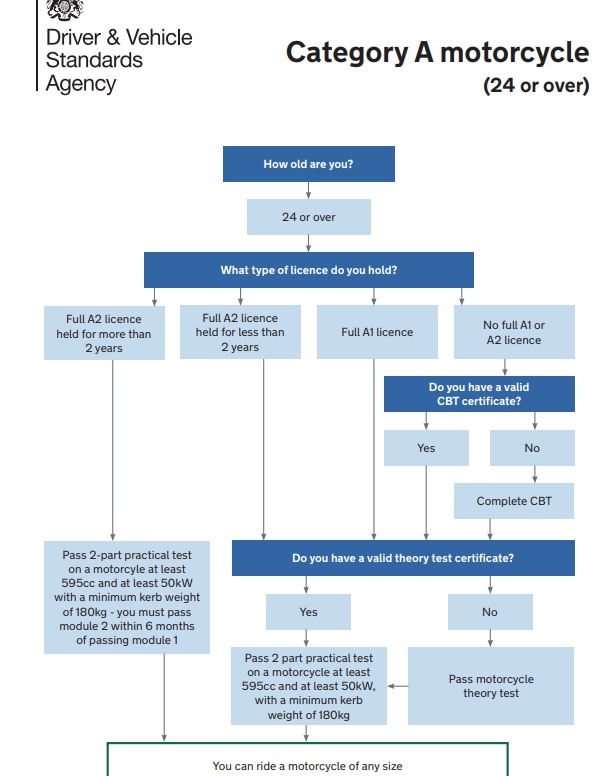C1.7 Motorcycle Licence¶
How to Ride a Motorcycle in the UK? How to Get a Motorcycle Licence in the UK?
Reminder: Many students ask about buying used motorcycles in the UK. Generally, it's advisable to buy a new one directly from an authorised dealer, as they often have promotions. Personally, I'm not sure why, but I relatively prefer BMW motorcycles. Of course, others are very cool too, it's just a personal preference. There are also many used motorcycle dealers in the UK; everyone should be careful to distinguish reliable ones. You can usually find many via Google Maps or Facebook (renamed Meta in October 2021).
Motorcycles are quite popular in the UK, ridden by many people. Although I haven't seen many of my classmates riding them – to be precise, they are less common in small towns and villages, but they are more numerous in slightly larger cities.
International students studying in the UK can also ride motorcycles, but they need to obtain a UK motorcycle licence.
Official Links:
Since someone asked, Ten-Litre Cat will write about it. Do you think it's not tiring for me to add 'Ten-Litre Cat' every time I write an article? It is tiring! But some unfamiliar friends really like my articles and share them directly by copying and pasting. So, if I just type using my own words, many people wouldn't know who I am, which is quite awkward. What if someone takes a liking to me and wants to proactively send me a staggering fortune? Of course, if I don't write well, what if someone wants to complain?
Apply for a Provisional Licence
Provisional Licence
Application Criteria
Be at least 15 years and 9 months old.
Be able to read a number plate from 20 metres away.
Have been resident in the UK for at least 185 days.
Application Fee:
Online application: £34
Postal application: £43
How to Apply:
Apply online via the government website.
Obtain a D1 form from the Post Office and apply by post.
Theory Test
I. Exam Information
Component | Description / Requirement |
Test Structure | Consists of two parts: |
Exam Format | Both parts are taken as a single test; you must pass both simultaneously. |
Booking Requirement | Must hold a provisional motorcycle licence. |
Minimum Age | Moped: 16 years old |
When to Take | Can be taken before or after completing Compulsory Basic Training (CBT). |
II. Study Materials & Practice
Resource Type | Specific Content |
Official Materials | The Highway Code |
Study Tools | Official DVSA Theory Test Kit (PC/Mac) |
Practice Tests | Free online practice tests available; questions based on real exam topics. |
III. Requirements on Test Day
Item | Specific Requirement |
Essential Documents | UK photocard driving licence. |
Special Circumstances | Paper licence holders must also bring a valid passport. |
Important Reminder | Without the correct documents, the test is cancelled and no refund is given. |
Arrival Time | Must arrive 15 minutes early. |
Electronic Devices | All devices must be switched off (phones, smartwatches, etc.). |
Personal Belongings | Must be stored in a locker or provided plastic box. |
Security Check | Includes showing pockets, rolling up sleeves, metal detector check, etc. |
IV. Exam Content Details
Exam Section | Number of Questions | Time Allowed | Content | Pass Mark |
Multiple-choice | 50 questions | 57 minutes | Includes case studies based on real riding scenarios. | 43 out of 50 |
Hazard Perception | 14 video clips | Untimed | Identify 'developing hazards'. (One clip contains 2 hazards). | 44 out of 75 |
V. Test Results & Validity
Result | Next Steps | Validity & Restrictions |
Pass | Receive a pass certificate number. | Number is valid for 2 years. Must pass the motorcycle practical test within this period. |
Fail | Can rebook after 3 working days. | Must retake the full test (even if one part was passed). |
VI. Support for Special Needs
Need Type | Available Support |
Reading Difficulty | Headphones to listen to questions (English/Welsh). |
Hearing Impairment | British Sign Language video. |
Other Circumstances | Contact DVSA before booking to discuss specific arrangements. |
Practical Test
I. Test Structure & Booking
Item | Description |
Test Components | Must pass two parts sequentially: |
Prerequisite | Must have passed the theory test first. |
Booking Rules | Modules can be booked separately or together, but you must pass Module 1 before taking Module 2. |
Lesson Requirement | No mandatory minimum number of lessons. |
II. Required Documents & Equipment
Category | Specific Requirements |
Documents to Bring | 1. UK photocard driving licence. |
Compulsory Equipment | 1. Helmet: Meeting British safety standards (Sikhs wearing a turban are exempt). |
Reminder | Test cancelled and no refund if correct documents/vehicle are not brought. |
III. Test Vehicle Regulations
Vehicle Attribute | Regulation Requirements | |||
General Requirements | 1. Solo motorcycle (specific disabilities excepted). | |||
Category & Power | Must use a vehicle that exactly matches the licence category applied for: | |||
Licence Category | AM (Age 16) | A1 (Age 17) | A2 (Age 19) | A (Age 24 direct / 21 progressive) |
Vehicle Type | Moped | Light Motorcycle | Standard Motorcycle | Unrestricted Motorcycle |
Engine Power | ≤ 4kW | ≤ 11kW | 20-35kW | ≥ 50kW |
Engine Capacity | ≤ 50cc | 120-125cc | ≥ 245cc | ≥ 595cc |
AM class: For mopeds, the entry level.
A1 class: For light motorcycles, the starting point for motorcycle licences.
A2 class: For medium-sized motorcycles, more powerful.
A class: The highest category, for all motorcycles.
Other Rules:
Passing the test on an automatic motorcycle restricts the licence to automatics only.
Power-restricted vehicles require an official approval letter.
Electric motorcycles must meet equivalent power and range requirements for their class.
IV. Module 1: Off-road Manoeuvres Test
Item | Details |
Test Duration | Approx. 20 minutes |
Assessed Manoeuvres | 1. Wheeling & using stand. |
Minimum Speed | Moped: 19 mph |
Pass Standard | 0 serious or dangerous faults. |
V. Module 2: On-road Riding Test
Item | Details |
Test Duration | Approx. 40 minutes |
Test Process | 1. Eyesight check: Must correctly read a number plate from 20 metres (failure ends test). |
Pass Standard | 0 serious or dangerous faults. |
After Passing | Can remove L-plates and ride alone immediately. |
VI. Special Circumstances
Situation | Procedure |
Adverse Weather | Test cancelled in hazardous conditions (e.g., ice, thick fog). |
Candidate/Vehicle Issue | If test cannot be completed due to illness or vehicle failure, must pay to rebook. |
DVSA Cancellation | (e.g., examiner illness) Automatically get a new test date; can claim reimbursement for proven costs. |
Disability or Health Condition | Examiner will make adjustments, e.g.: |
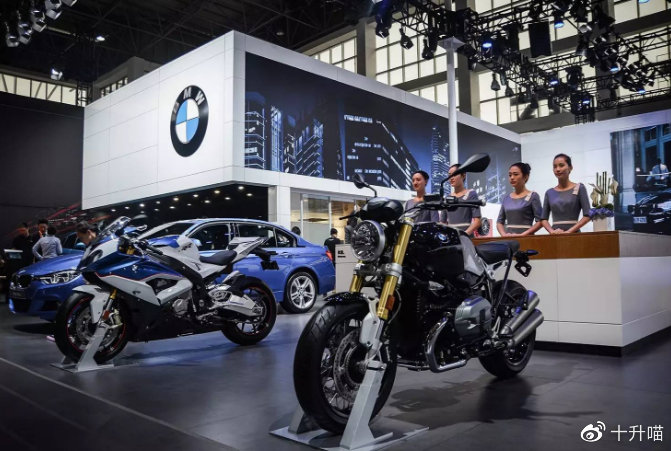
Firstly,
If you held a licence for a motorcycle or moped (including electric bicycles, motorised bicycles, or those with small engines) before 19 January 2013, different rules apply. For those after this date, to ride on public roads, you must first obtain a Provisional Driving Licence and then complete Compulsory Basic Training (CBT) to get your CBT certificate. Furthermore, after obtaining your CBT certificate, you must pass both the theory test and the motorcycle practical test within 2 years. If you do not pass both tests within this period, you must retake the CBT.
Then,
Motorcycles are divided into many categories, similar to the motorcycle licence classifications in China (e.g., D, E, F, where D covers all motorcycles including three-wheeled and two-wheeled, E covers all two-wheeled motorcycles, and F is only for two-wheeled mopeds under 50cc).
Therefore, the UK motorcycle licensing system is similar, with different categories. The type of licence you need depends on the type of motorcycle you wish to ride. Generally, most people aim for categories A, A1, or A2. The specific categories are detailed in the image below:

If you want to ride a motor tricycle in the UK:
A provisional Category B (car) licence and a provisional Category A licence are only valid for driving a motor tricycle if you have a disability. The practical test for three-wheeled motorcycles is only available to drivers with disabilities.
If you do not have a disability and wish to ride a motor tricycle in the UK, you need to pass your CBT. Provided you meet the following conditions, you can then ride a motor tricycle of any power output:
You are over 21 years old.
You have a full car driving licence.
You need to obtain a Category A1 motorcycle licence (the version for motorcycles up to 15 kW) and a Category A motorcycle licence.
Ten-Litre Cat reminds you again: After obtaining your CBT certificate, you must pass both the theory test and the motorcycle practical test within 2 years. If you do not pass both tests within this period, you must retake the CBT.
Furthermore, if you hold an EU driving licence, before you can take the CBT course, you must fulfil one of the following:
Exchange your licence for a UK licence. [Link for exchanging your licence: https://www.gov.uk/exchange-foreign-driving-licence/y]
Register your licence with the DVLA (Driver and Vehicle Licensing Agency). If you register your EU licence, you must exchange it for a UK licence after you pass the theory and practical tests. [Link to register your licence with the DVLA: https://www.gov.uk/government/publications/d9-application-to-register-a-non-gb-driving-licence]
How to learn to ride a motorcycle in the UK?
While learning to ride a motorcycle, you must have a provisional motorcycle licence. If you are using your own motorcycle, you need to ensure you have the following:
A valid V5C registration certificate (log book).
Valid vehicle tax.
A valid MOT certificate (if the vehicle requires one).
Adequate motorcycle insurance.
The Official DVSA Guide to Learning to Ride
You need to purchase the official DVSA guide, The Official DVSA Guide to Learning to Ride, as shown in the image below. This book, which previously cost £9.99 (the current price is £14.99), contains all the information you need to pass your CBT. The official purchase link is:
【https://www.safedrivingforlife.info/shop/official-dvsa-guide-learning-to-ride/】:
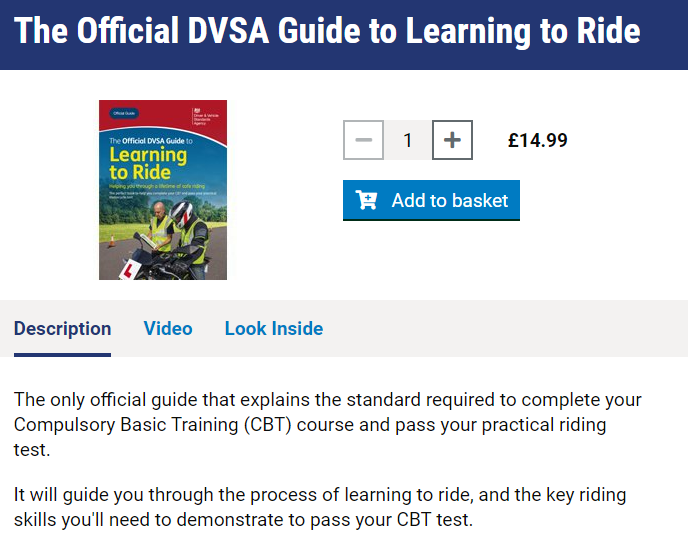
2. Purchase The Official DVSA Guide to Riding - the essential skills, as shown in the image below. This book covers the content needed to pass the theory test. The previous price was £10.99 (the current price is £14.99). Official purchase link:
【https://www.safedrivingforlife.info/shop/official-dvsa-guide-riding-essential-skills/】
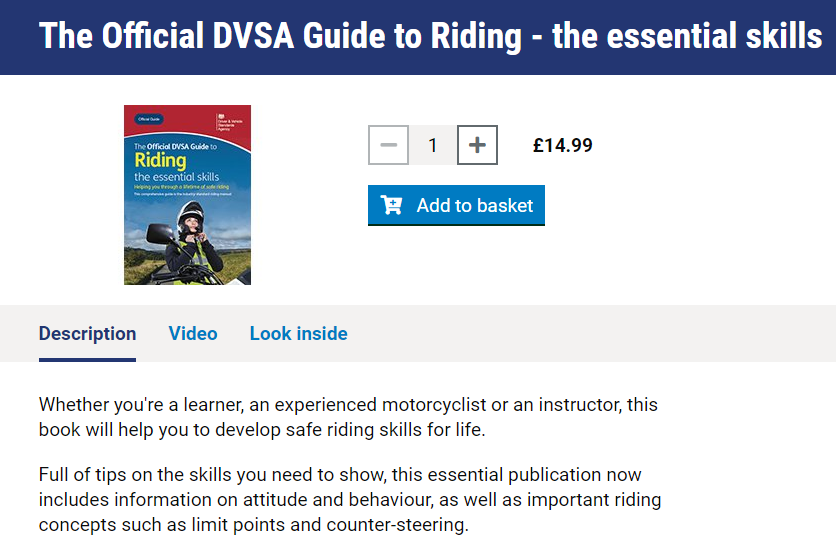
Of course, you can also search for the official books yourself. E-book versions and other related titles are available, including guides on UK road conditions. You can purchase according to your needs. Search link:
:【https://www.safedrivingforlife.info/shop/motorcycle/】
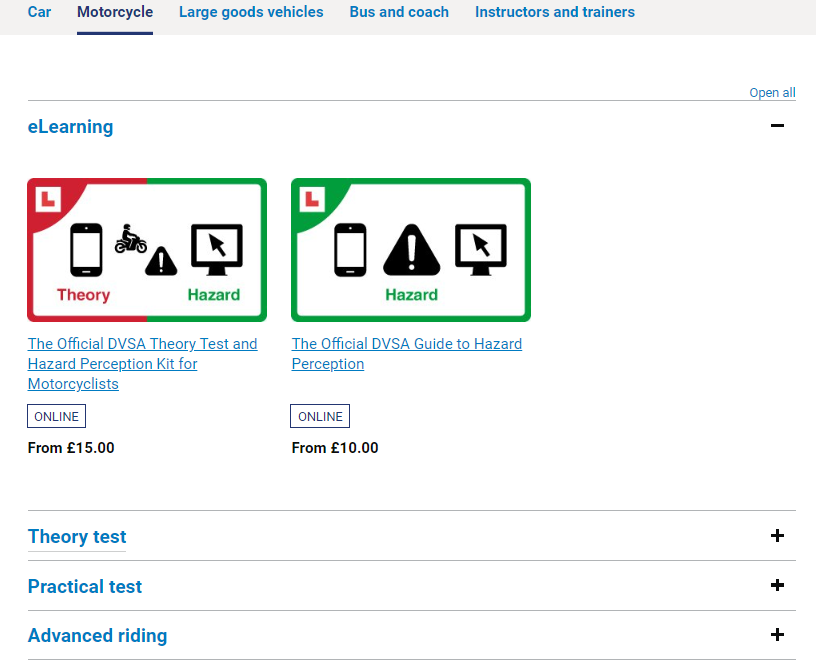
Taking the Full Motorcycle Test
Theory Test
Practical Test
The sequence of tests is as follows:
Obtain a provisional driving licence.
Pass the Compulsory Basic Training (CBT).
Pass the theory test.
Pass Module 1 (off-road practical test).
Pass Module 2 (on-road practical test).
Pass the practical riding tests.
This means that although the test seems to consist of only two main parts, you actually need to pass six distinct stages to obtain a full UK motorcycle licence. All these tests incur fees. For detailed information on each of these six stages, see the links below.
Stage 1: Obtain a provisional driving licence
Before you can take the motorcycle practical test, you must first pass the theory test. However, before you can take the theory test, you must have a provisional driving licence.
(Link to apply for a provisional licence: https://www.gov.uk/apply-first-provisional-driving-licence), as shown in the image below.
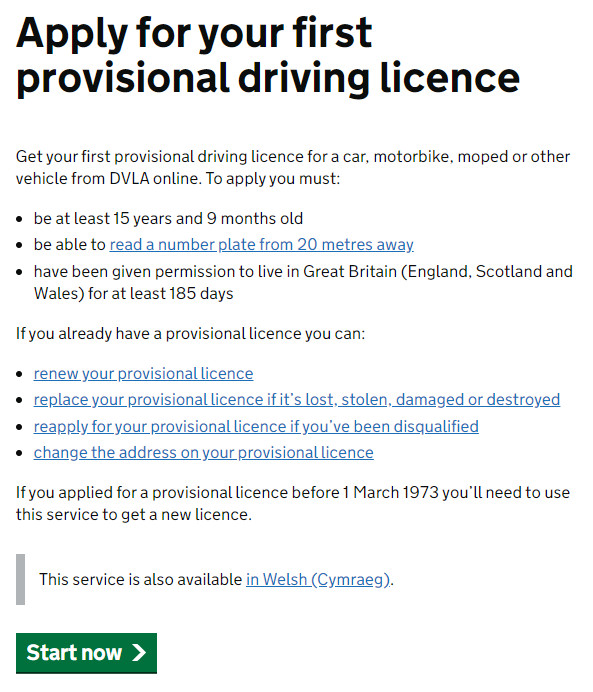
On the official website for applying for a provisional driving licence, the steps are also listed on the right-hand side. The third step involves various courses and materials, including introductions to traffic signs and rules, etc.

Stage 2: Pass the CBT
As mentioned before, CBT stands for Compulsory Basic Training.
Link to book/find CBT courses:
【https://www.gov.uk/motorcycle-cbt】

reminds you: If you do not hold a valid CBT certificate, you could be fined up to £1000 and receive 6 penalty points. Therefore, this first stage is crucial. Aside from meeting the age requirement, you must also display L-plates on the motorcycle.
Stage 3: Pass the Theory Test
The link for booking the motorcycle theory test is: [https://www.gov.uk/motorcycle-theory-test]. Please note, before applying for this test, you must meet the prerequisites mentioned above, i.e., obtain a provisional driving licence, as shown in the image below:
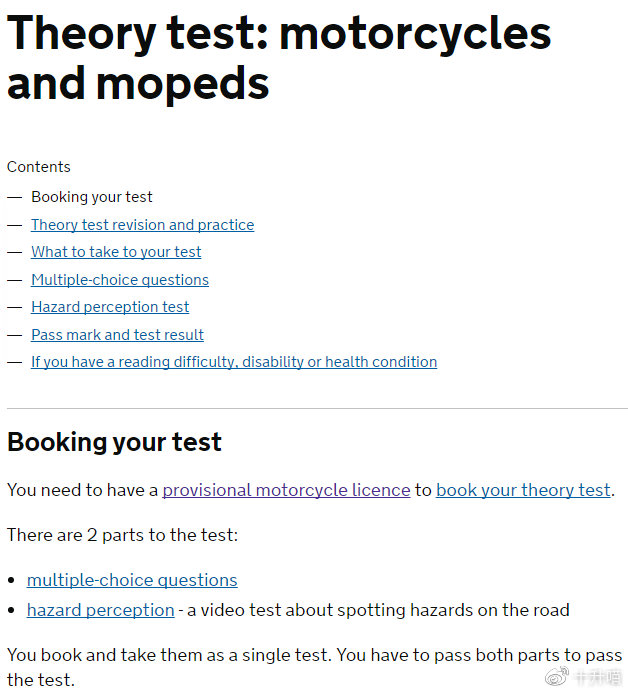
After passing the theory test, and before you can book the practical test, you must also meet the following requirement:
Stage 4: Pass Module 1 - the off-road practical test
1. Pass Module 1 - the off-road practical test
Link for Module 1 test details and booking: https://www.gov.uk/motorcycle-test/module-1-offroad-test
This Module 1 test typically takes about 20 minutes. The test content includes:
Wheeling the motorcycle and using the stand
Riding a figure-of-eight
Slow riding
A U-turn
Cornering and controlled stopping
Cornering and emergency stopping
Cornering and avoiding a hazard
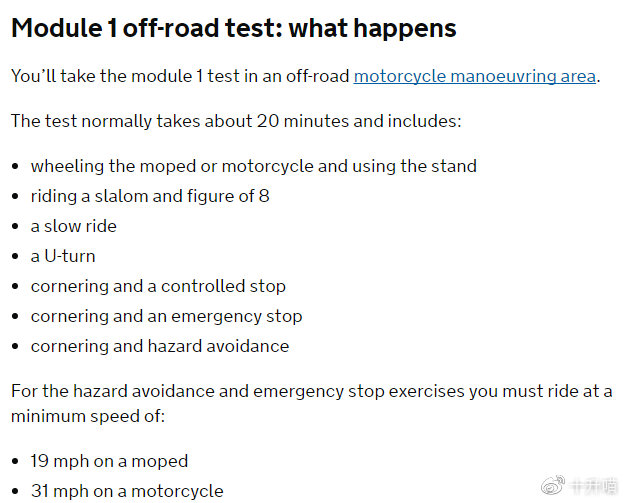
Stage 5: Pass Module 2 - the on-road practical test
2. Pass Module 2 - the on-road practical test
Link for Module 2 test details and booking: https://www.gov.uk/motorcycle-test/module-2-onroad-test
Note: The modules can be booked separately or together. However, you must pass the Module 1 test before you can take the Module 2 test. The fee for each module is different.
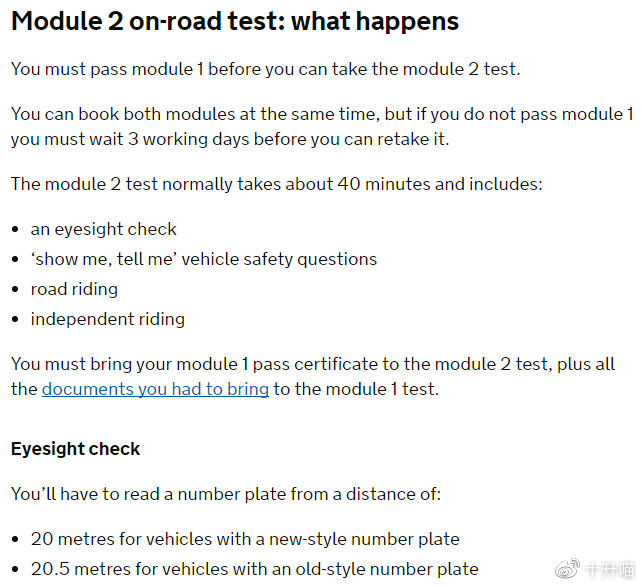
Stage 6: Pass the Practical Riding Test
Once you have passed the previous five stages, you can then apply for this.
Link to book the practical riding test: https://www.gov.uk/book-driving-test
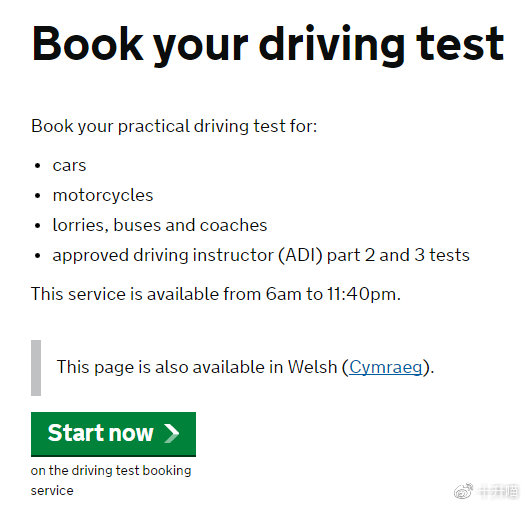
Reminder: Riders under 30 years old who have held a full UK motorcycle licence for less than one year are temporarily restricted from test riding motorcycles over 1000cc.
Ten-Litre Cat reminds you that while the process for obtaining a licence for different types of motorcycles in the UK is similar, the specific requirements vary. Therefore, before riding or applying for a UK motorcycle licence, first determine which type of motorcycle you wish to ride. The testing process for each category of UK motorcycle is shown in the chart below. The UK motorcycle categories include: AM (mopeds), A1 (light motorcycles), A2 (motorcycles), Category A motorcycles (for ages 21 to 23), and Category A motorcycles (for ages 24 or over), as follows:
